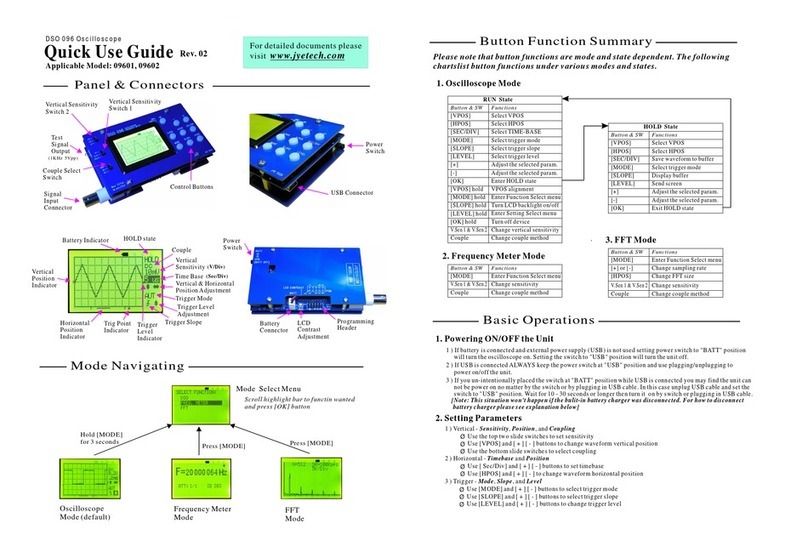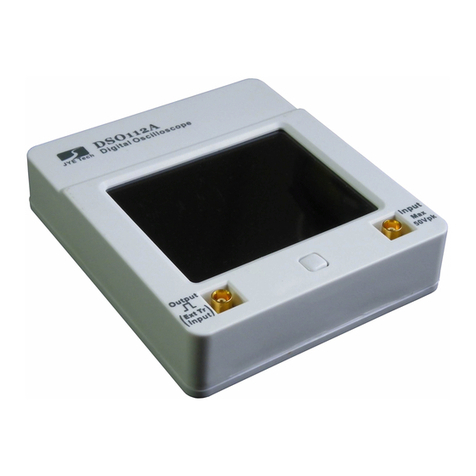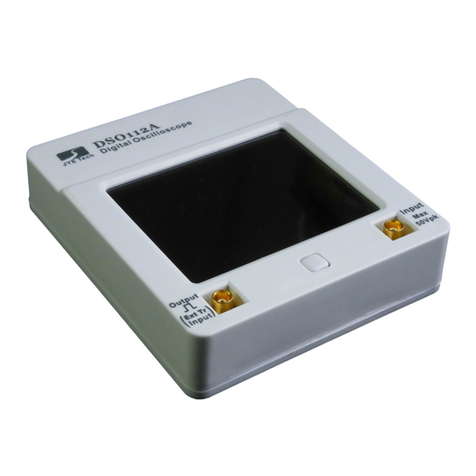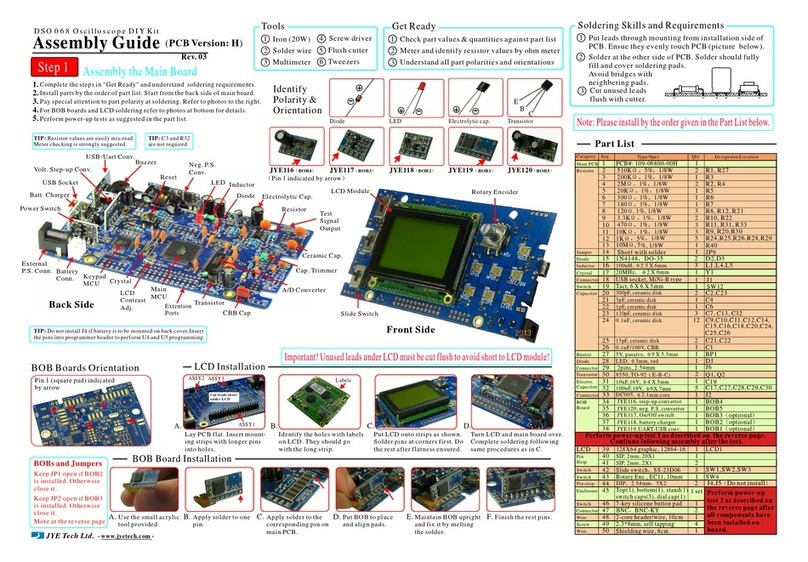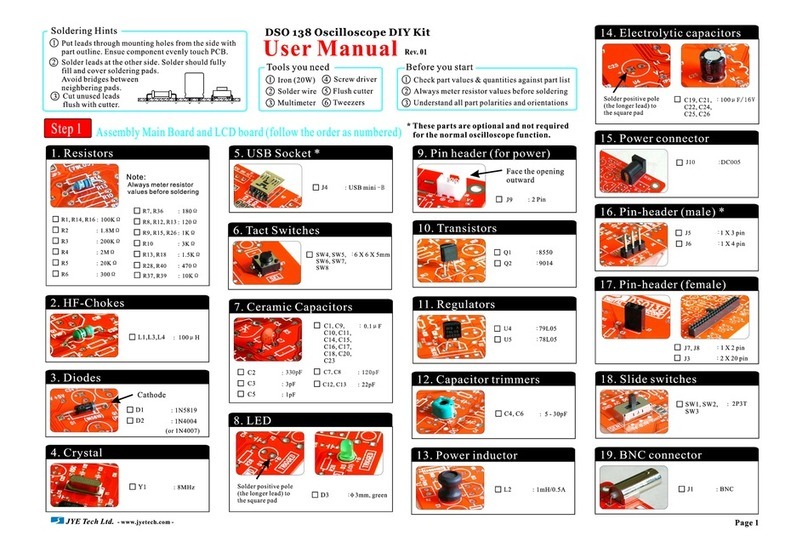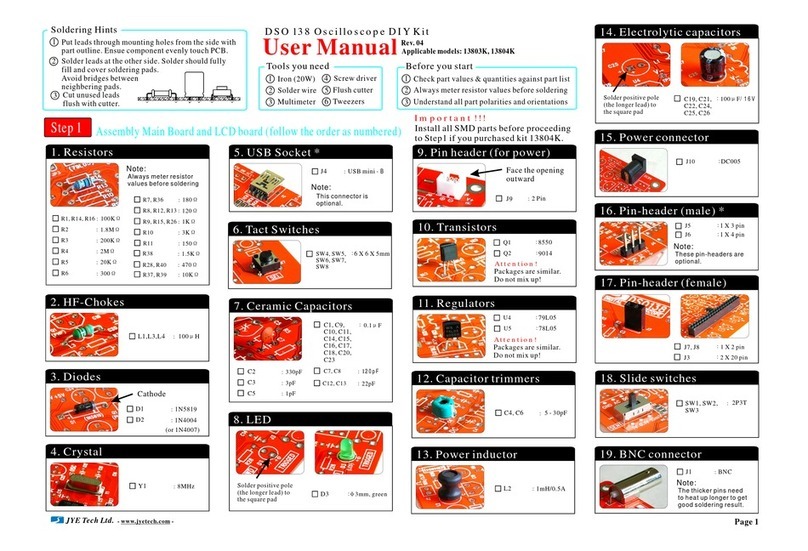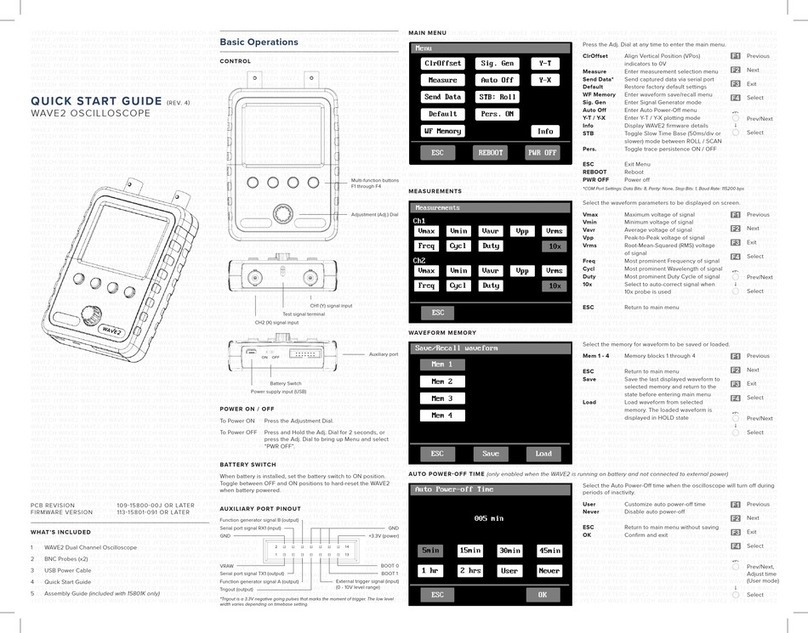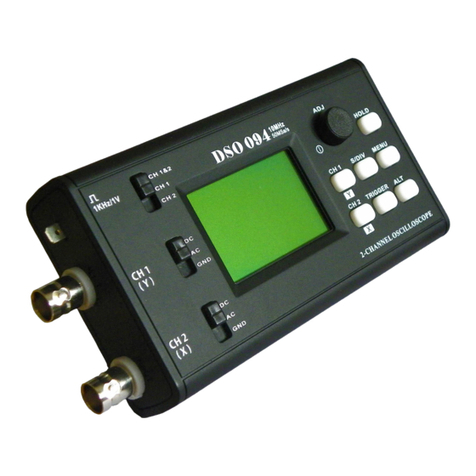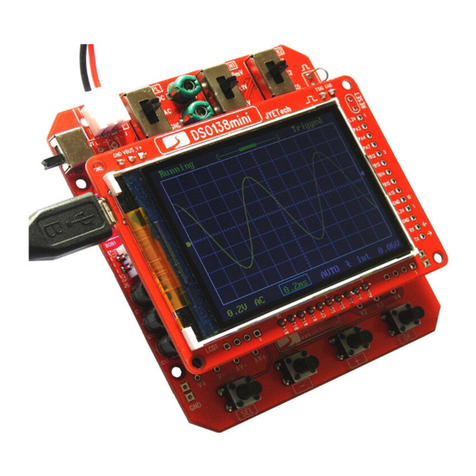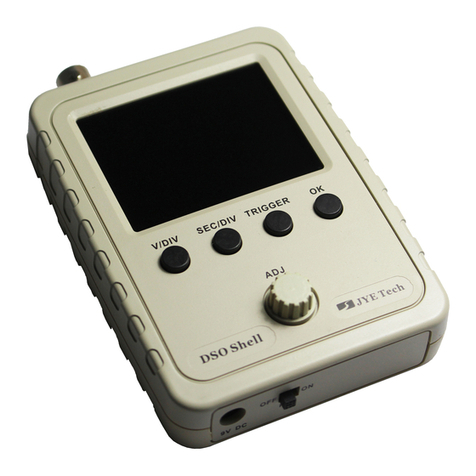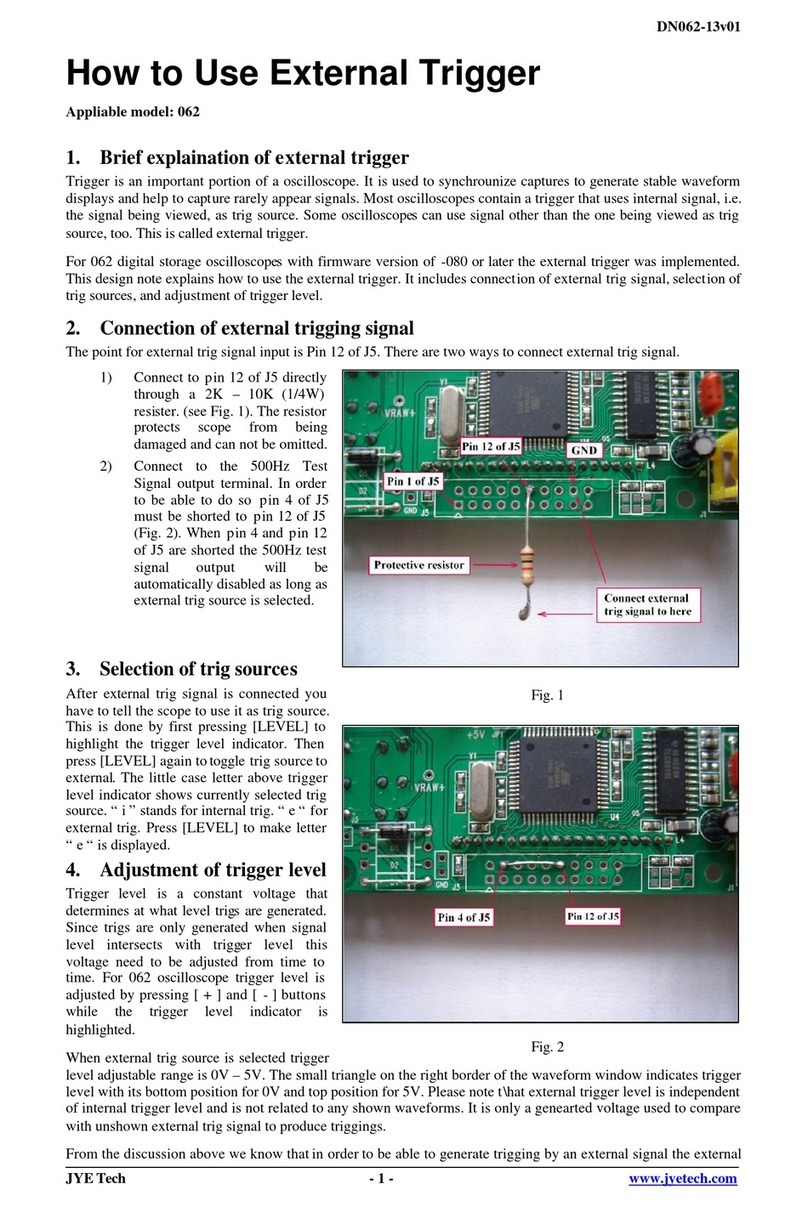HOL D RUN/
Connec tors
for Pow er S upply
Trig ger Level
Rea d out
Horizontal
Positio n
Osc i ll osco p e
Mode
Connec tor
for Probe
Couple
Se l ection
Se nsiti vity
Se l ect ion 1
Sen s iti vity
Sel ection 2
Vertic al
Position
Indicator
Se nsitivi ty
Couple
Timeba se
Trigge r
Mod e
Trig ger
Slop e Trigg ed
Indicator
Trig ger
Leve l
Indicator
Parameter
Se l ection
Para m eter
Adjustment
Res et
Butt on
[+] or [-]:
[SEL]:
[OK]:
[CP L]:
[SEN1] :
[SEN 2]:
Display and Controls
Connections
Power Supply:
Co nnect DC power supply to J9 or J10. The power
supply voltage must be i n the range of 8 - 12V.
Probe:
Connect probe to J1.
Power supply voltage must not exc eed
12V. Otherwi se U5 will get hot.
1.
Allowed maximum signal input voltage
is 50Vpk (100Vpp) with the clip pro b e.
2.
Operations
Press on [SEL] button:
Select parameter to be adjusted. The sel ected parameter will be highlighted.
Press on [+] or [-] button:
Adjust the parameter selected by [SEL] button.
Press on [OK] button:
Freeze waveform refresh (entering HOLD state). Press on it again will de-freeze.
Change [CPL] switch:
Set couple to DC, AC, or GND. When GND is selected the scope input is isolated from input
signal and connected to ground (0V input).
Change [S EN1] or [SEN2] switch:
Adjust sensi tiv ity. The product of [SEN1] and [SEN2] settings makes the
actual sensitivity which is displayed at the lower-left corner of the panel.
Press on [Reset] button:
Perform a system reset and re-boots the oscillscope.
Tips
This is to fix the mismatch between 0V trace and VPos indicator. To do this set couple switch [CPL] to GND po sition.
Press on [SEL] button to make VPos indicator highlighed. Hold down [O K] button for about 2 seconds. You will see
VPos indicator aligned to 0V trace when you release [OK] button. You may see some residue mismatch remains at
the highes t sensitivity settings. This is normal.
Probe Calibration
Because there is alwa ys some capacitance between scope input and
ground probe needs to be calibrated to achieve better measurement
results for high frequency signals. This can be done with the help of
the built-in test signal. To do this please fol low the steps below.
Connect red cli p to
test s ign a l output
Leave bl ack cl ip
un- con nected
Connect the red clip to the test signal terminal and le ave the
black clip un-connected (see p hoto at ri ght).
1.
Set [S E N1] switch to 0.1V an d [SEN2] switch to X5 .
Set [C PL] switch to AC or DC.
2.
Adjust timebase to 0.2 m s. You should see waveform similar
to that shown in photos below. If t races are not stable adjust
trigger lev el (the pink triangle on righ t screen border) so as
you get a stable display.
3.
Turn C4 (capacit or trim mer) with a small screw driver so that
th e waveform displays sharp rightangle (photo C).
4.
C4
C6
Set [SEN1] switch to 1V an d [SEN2] switch to X1while keep al l other
settin g s unchanged. Adjust C6 so that sharp rightang le waveform is
di splayed.
5.
A Not en ough B Too much C Good
Analog bandwidth
Se nsi tivity range
Resolution
Record length
Max realti me sampl e rate
Timebase range
Max input volta ge
Input impedance
Power supply
Current consumption
Dimension
Weight
1MSa/s
0 -- 200KHz
10mV/div - 5V /div
50Vpk (1X probe)
1M ohm/20pF
12 bits
1024 points
500s/Di v -- 10us/Div
9V DC (8 12V)
~120mA
117 x 76 x 15mm
70 gram (withou t probe)
Trigger mode s
Trigger position range
Auto, N ormal, and Singl e
50%
Specifications
Waveform Save/R ecall
Press [SEL] & [+] simultaneously: Save currently di splayed waveform to non-volatile memory.
www.jyetec h.com
JYE Tech Ltd.
Tel. +86-07 73-2113856
Triggers and Th eir Modes
Triggers are even ts that indicate signal volt age acrossing
a set lev el (i.e. trigger le vel) along a specified direction
(i.e. trigger slop e, rising or falling). Oscilloscope uses
triggers as reference poin ts in time for stab le waveform
dis play and measurements.
In aut o mo d e oscill oscope will perform disp lay refresh no
matt er triggers happen or not. When triggers are detected
waveform display will be dis p layed with reference to
trigger points. Otherwis e, disp lay waveform at ramdom
reference points.
In normal mode oscilloscope will onl y perform dis play
refresh whe n there are tri ggers. If no t rigg ers happen
waveform display will stay u nchan g ed.
Single mode is the sam e as normal mode except that
oscillo scope will enter HOLD state after a trigger has been
detected and waveform display has bee n up d ated.
Normal and single modes are us eful for capturing sparse
or single waveform.
Se l ection
(s/div)
(V/d iv )
Tech Support: www.jyetech.com/forum
Page 3
- www.jyetech.com -
JYE Tech Ltd.
Turn On/Off Readouts
Press [SEL] so that timebase is highlighted. Hold down [OK] button for ab out 2 seconds. This wi ll turn
on/off measurement readouts.
Press [SEL] & [-] simultaneously: Recall saved waveform
Hold down [+] and [-] buttons simultaneousl y for 2 seconds.
Highl ight trigger level indicator and hold down [O K] button for 2 seconds.Highl ight trigger level indicator and hold down [O K] button for 2 seconds.
Highl ight HPos indicator and ho ld down [OK] button for 2 seconds.
